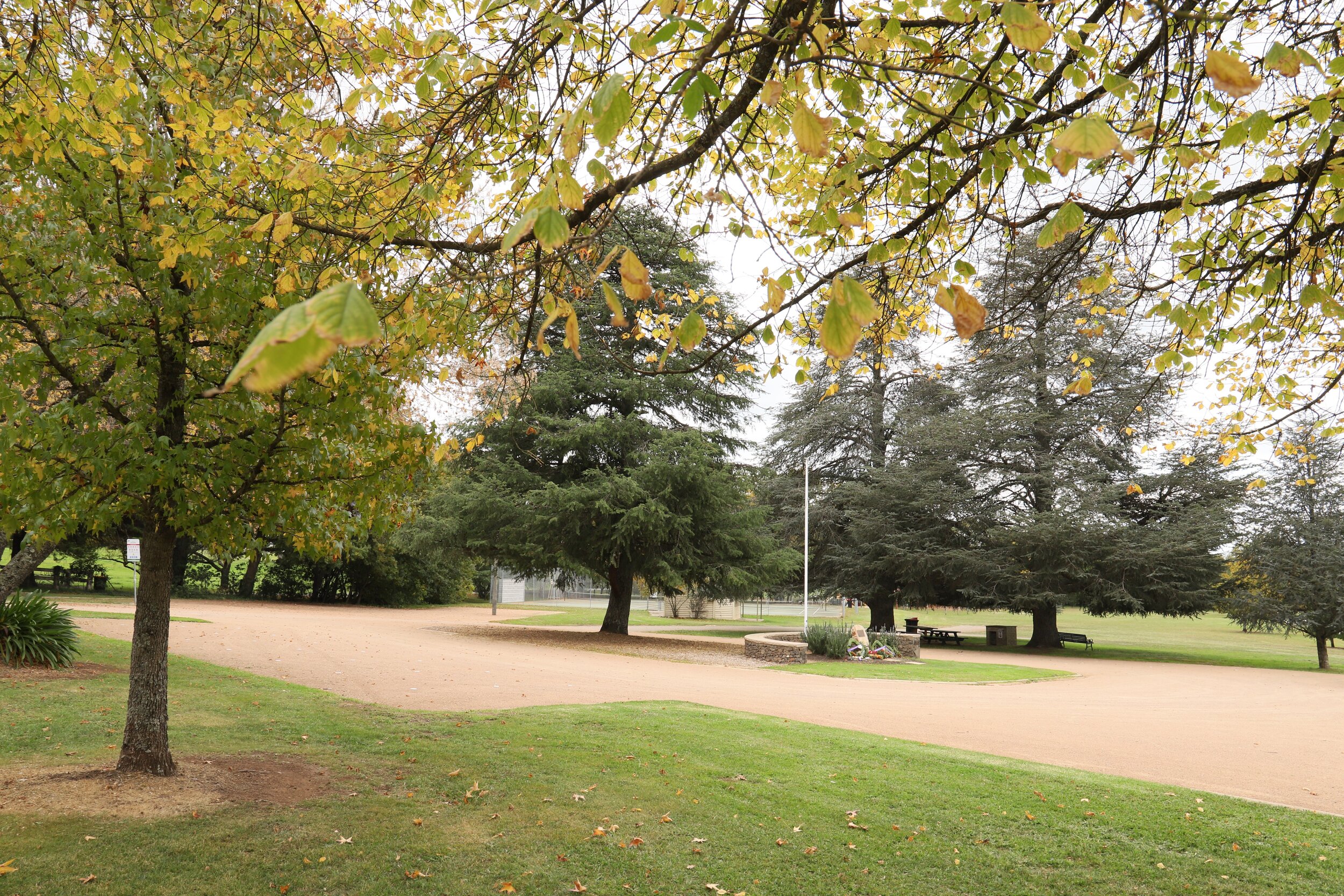
Our Histories
Exeter
The villages and areas surrounding Exeter and Sutton Forest are situated on the lands of the Gundungurra people. These lands stretch from the Camden area to Goulburn.
The first European party investigating the area in 1798 described it "the most beautiful country being nothing but fine large meadows with ponds of water in them, fine green hills but very thin of timber".
James Badgery, who was looking for open fertile land to graze his expanding herd, took up a land grant of 500 acres between the present Sutton Forest and Exeter Villages in 1821.
Over the next two decades the growing Badgery family expanded their holdings to include Vine Lodge.
By 1841 there was a flourishing community on the Badgery properties. Vine Lodge alone had 33 residents, 13 convicts and ex-convict workers.
It is on the original Vine Lodge property that the village of Exeter now stands. Exeter derives its name from the cathedral city and county town in Devon, England which is near James Badgery's birthplace.
The advent of the railway in 1867 brought great change, enabling local farmers to more easily sell produce to the Sydney market. By the 1880s train travel brought holiday makers to the area and wealthy Sydneysiders began building country retreats.
In the late 1880s the village of Exeter began to take shape. By 1895 it had most of the services required by a small community - a railway station, school, church, post office, general store and bakery. Many of these buildings remain today though some have been repurposed.
In 1901 the Exeter population was 254. In 1902 The School of Arts hall was built and still stands today though with a recent extension. In 1911 land for a park (now Exeter Park) was purchased. Half the money was raised by the local residents and half provided by the government.
Exeter had a vibrant social life in the early 1900s with dances, concerts, card evenings, and weekly film nights thanks to the travelling picture show man.
The fertility of the soil and the cool climate of Exeter inspired Arthur Yates to establish his seed and bulb farm on 88 acres in the 1890s. He later established a nursery for flower and vegetable trials. The Yates land would later become the Invergowrie Estate.
The Searl and Jensen family also established specialist nurseries close by. In the spring, thousands of daffodils were sent from the area to the Sydney markets.
Thanks to these founding families Exeter and the surrounding area have inherited beautiful heritage houses, gardens and shady trees, and public spaces which continue to give pleasure to residents and visitors alike.
Sutton Forest
In front of the Sutton Forest Inn is a memorial to the first party of explorers to the region, led by the ex-convict John Wilson. In 1798 he and his party had been sent inland by Governor Hunter, reputedly to prove to the convict population of Sydney that they could not escape over the mountains to freedom.
Hamilton Hume and his brother came through the Sutton Forest area in 1814, and pioneer Surveyor General John Oxley drove his cattle from Sydney into the area in 1816.
The Sutton Forest area was named by Governor Lachlan Macquarie in 1820 after Charles Sutton, the speaker of The House of Commons. Macquarie issued land grants to both large and small settlers. By the late 19th century politicians and wealthy business people created expansive country estates.
Some of them built substantial homes and impressive gardens on their lands. These were the Georgian style Oldbury (1828) and Golden Vale (1868-9); the Victorian style Boscobel (1877), Summerlees (1881), Bunya Hill (1878) and Prospect (1872-75) now Hillview, which for many years was the country residence of the NSW Governors. Whitley (1887) in Oldbury Road was built in the Tudor Revival style.
Sutton Forest village evolved at the junction of the Old South Road, now the Illawarra Highway, and the Exeter/Bundanoon Road. The building now housing The Everything Store (c1850) served as a post office until its role was taken over by Thomas Cosgrove's old post office (1883). Situated opposite the Sutton Forest Inn, it is now a private residence. The inn was built in 1936 on the site of The Talbot Hotel (1833). Another two inns, which no longer exist, were built in the 1830s, The Harp and The Red Cow.
All Saints Anglican Church (1861) was designed by the famous architect Edmund Blackett. The old village butcher shop (c1895) was briefly a coffee shop and the stables at the rear were for a few years repurposed as a fruit and vegetable market. The school (1879) is now a private residence.
Further south is the village hall (1926) now leased to a puppet theatre, and St Patrick's Roman Catholic church (1879) built on the site of a former catholic school (1856). The graveyard dates back to the 1860s, revealing the Irish ancestry of many of the early settlers.
A visitor in 1832 described Sutton Forest as a most luxurious spot. "There is much of the English village in miniature about this township as any I know of - a homeliness of scenery that strikes the attention and induces a second pause to look again at the neat cottages, the snug little church, the light timber with its umbrageous foliage".
EVA acknowledges the work of local historian Linda Emery whose book Exploring Exeter provided much of the content for this pocket history. This book gives more in depth information about the history of Exeter and more details of the heritage buildings which remain in the village today.

